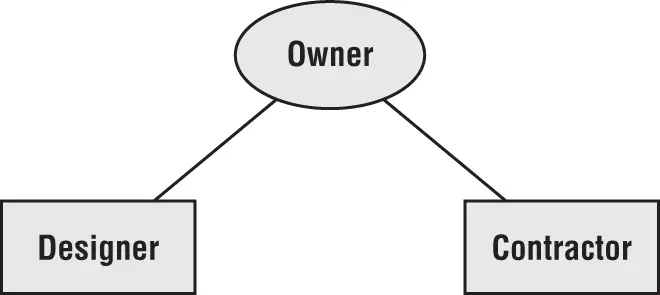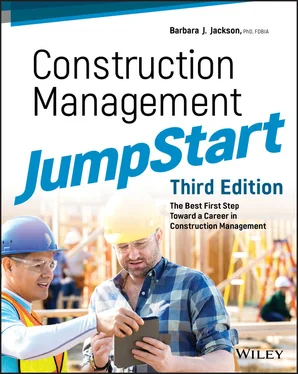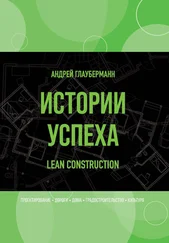The scope of work sets the parameters for the construction project and identifies the work to be done. Generally, the scope of work is presented in the plans or “blueprints” (so called because of the blueprint machines once used to reproduce them as white lines on blue paper) and in the written specifications, all of which are developed by the designer. The scope describes the building layout, site work, square footage, number of rooms, number of floors, types of materials (windows, siding, floor covering, roof, and so on), dimensions, special equipment, storage requirements, and so on. The scope of work detailed in the plans and specs also defines the level of quality for the project. For example, the architect may detail and specify brick exterior walls in lieu of siding and, by doing so, add a measure of life expectancy, durability, and aesthetic appeal not available with siding.
Part of the construction management challenge is to make sure that the scope of the project is being delivered as intended throughout the construction process. First, contractors need to make sure that they've included the entire scope of work in their estimates. Then it takes oversight to ensure that the correct materials specified and estimated are actually purchased and delivered to the job site for installation. And during construction, the details of the design must be checked and rechecked against the plans and specifications to verify that they are in compliance with the requirements stipulated by the contract.
The key to delivering a successful project is to start with a really well-defined project scope. A poorly written scope will usually result in a poor response from the contractor. Obviously, a contractor can't plan for something that is not defined as a requirement of the project to begin with. A well-written scope, more than any other factor, will help reduce risks for all parties involved. It is critically important that the owner takes the time, does the planning, and solicits the professional help needed to do a good job before the project begins. It will pay off for everyone in the long run.
Anyone who has ever taken on a construction project is well aware that most projects display some cost overruns, time delays, and conflicts among the various parties. Of course, the object of the game is to mitigate these risks as much as possible. One of the ways you can accomplish this is by choosing the right project delivery method to start with.
It is the owner who ultimately decides which project delivery method to use. Unfortunately, many owners are illequipped to make a thorough assessment of the many factors that can impact project success relative to the owner's specific criteria. Too often they choose a traditional methodology simply because they are familiar with it. Ultimately, they end up accepting less than stellar results, not realizing that their decision for project delivery had set the stage for inefficiencies and trouble before the project even started. However, I am getting ahead of myself. I will provide some insight into project delivery selection criteria later in this chapter. For now, let's just focus on what project delivery is and how construction management plays into it.
What Is Project Delivery?
Project delivery is the process by which all the procedures and components of designing and building a facility are organized and put together in an agreement that results in a completed project. The process begins with the compilation of needs and requirements of the owner spelled out in the architectural program. These needs and requirements are first expressed in preliminary plans from which initial material, equipment, and systems selections are made. With these selection decisions, the design becomes further refined until all design decisions are made and a final set of contract plans and specifications is completed. The owner then determines which procurement methodology (purchasing steps) to use to buy the construction services and the criteria that will be used to select the contractor. Finally, the owner selects which type of contract to employ. Once selected, the contractor goes about planning an overall strategy for delivering the project in accordance with the plans and specs that have been developed. All the parts and pieces of the agreement are put in place, and the game plan is established.
This game plan also determines how the players will interact and communicate with one another over the course of the project.
Types of Project Delivery
There are basically four primary project delivery methods: design-bid-build, at-risk-construction management, design-build, and integrated project delivery. Keep in mind that the functions associated with construction management are required in all four methods even though only one of them is actually named construction management . As I said earlier, this can get a little confusing.
These four project delivery methods differ in five fundamental ways:
The number of contracts the owner executes
The relationship and roles of each party to the contract
The point at which the contractor gets involved in the project
The ability to overlap design and construction
Who warrants the sufficiency of the plans and specifications
Regardless of the project delivery method chosen, the three key players—the owner, the designer (architect and/or engineer), and the contractor—are always involved. The traditional roles and responsibilities for the three parties were spelled out in Chapter 1, but keep in mind that the accountabilities and relationships change with the various project delivery methods, as I described in the previous list. And additional players will be added to the project team, usually as subcontracted partners. This will become clearer as you read the individual project delivery descriptions that follow. Each of these methods has specific advantages and disadvantages, and it is the owner's responsibility to assess the project delivery choices in relation to their project needs.
Design-Bid-Build
design-bid-build
A project delivery method in which the owner holds two separate contracts for design and construction. This method is often referred to as the traditional project delivery method.
Design-bid-build is commonly referred to as the traditional method of project delivery, and the traditional accountabilities apply. In this scenario, the owner first hires the architect or engineer to design the building or structure. The design professional prepares a design, moving through the three standard design phases: schematic design, design development (the design development drawings are often referred to in the industry as DDs), and finally contract documents (referred to as CDs). Under this arrangement, the design professional is usually selected on a qualifications basis and then is typically paid a fee or a percentage of the building cost for their services. (Contract documents will be discussed in greater detail in Chapter 4, “The Construction Contract.”)
After the plans and specifications are complete, the owner selects the general contractor who will provide the construction and construction management services. The most common means for selecting the general contractor under this method is by low price or low bid: several competing contractors estimate the project based on the contract documents, and the builder with the lowest price gets the contract. The general contractor typically subcontracts various sections of the work to specialty contractors. Under this method, the owner holds two separate contracts, one with the designer and one with the contractor.

In this arrangement, all dealings between the designer and the contractor go through the owner. There is no legal agreement between the designer and the contractor. This method is very linear in nature, and the contractor does not have any input regarding the design of the project. The contractor is only responsible for carrying out the work as spelled out in the plans and specs and will utilize the various construction management functions to accomplish this task.
Читать дальше













